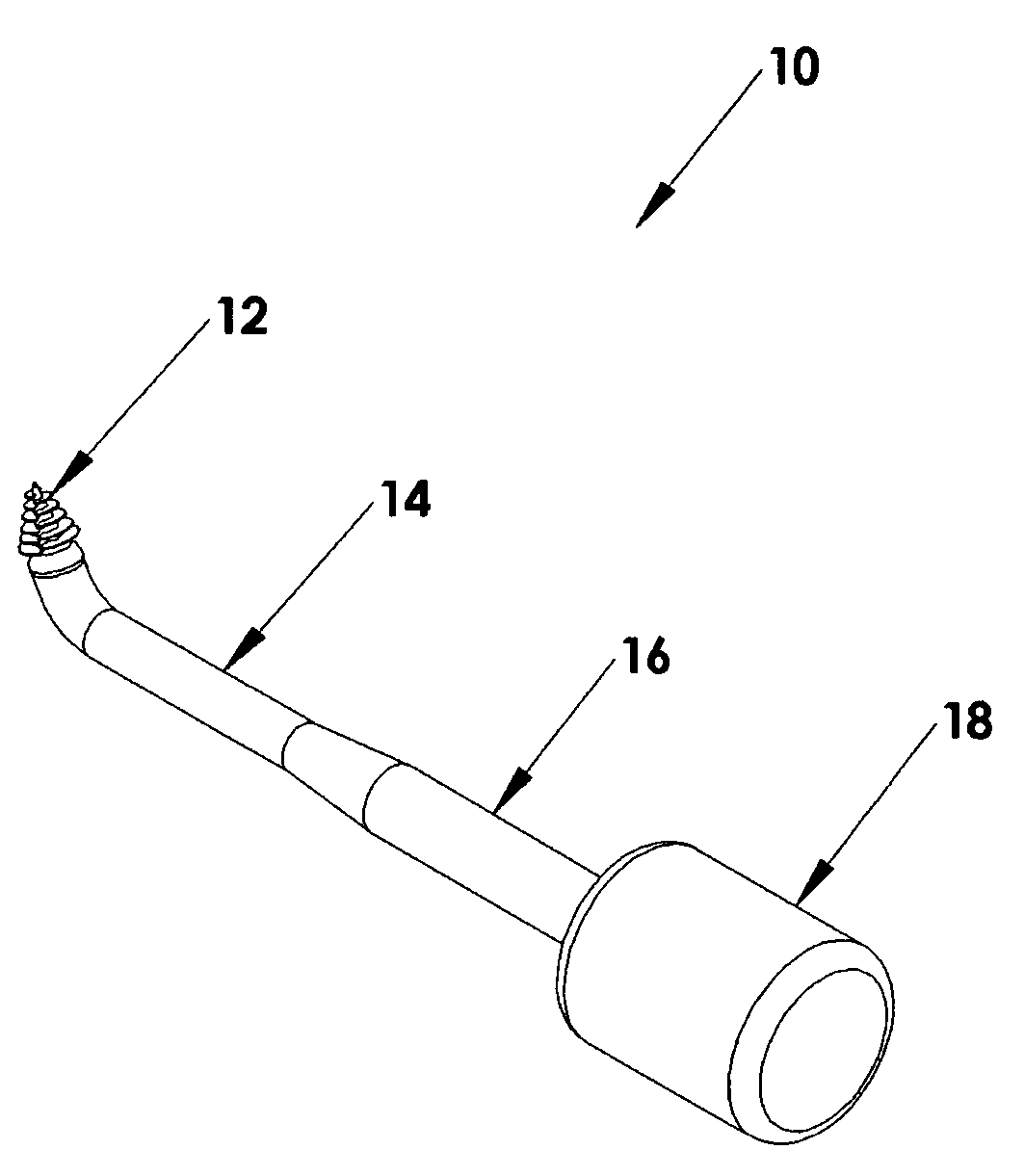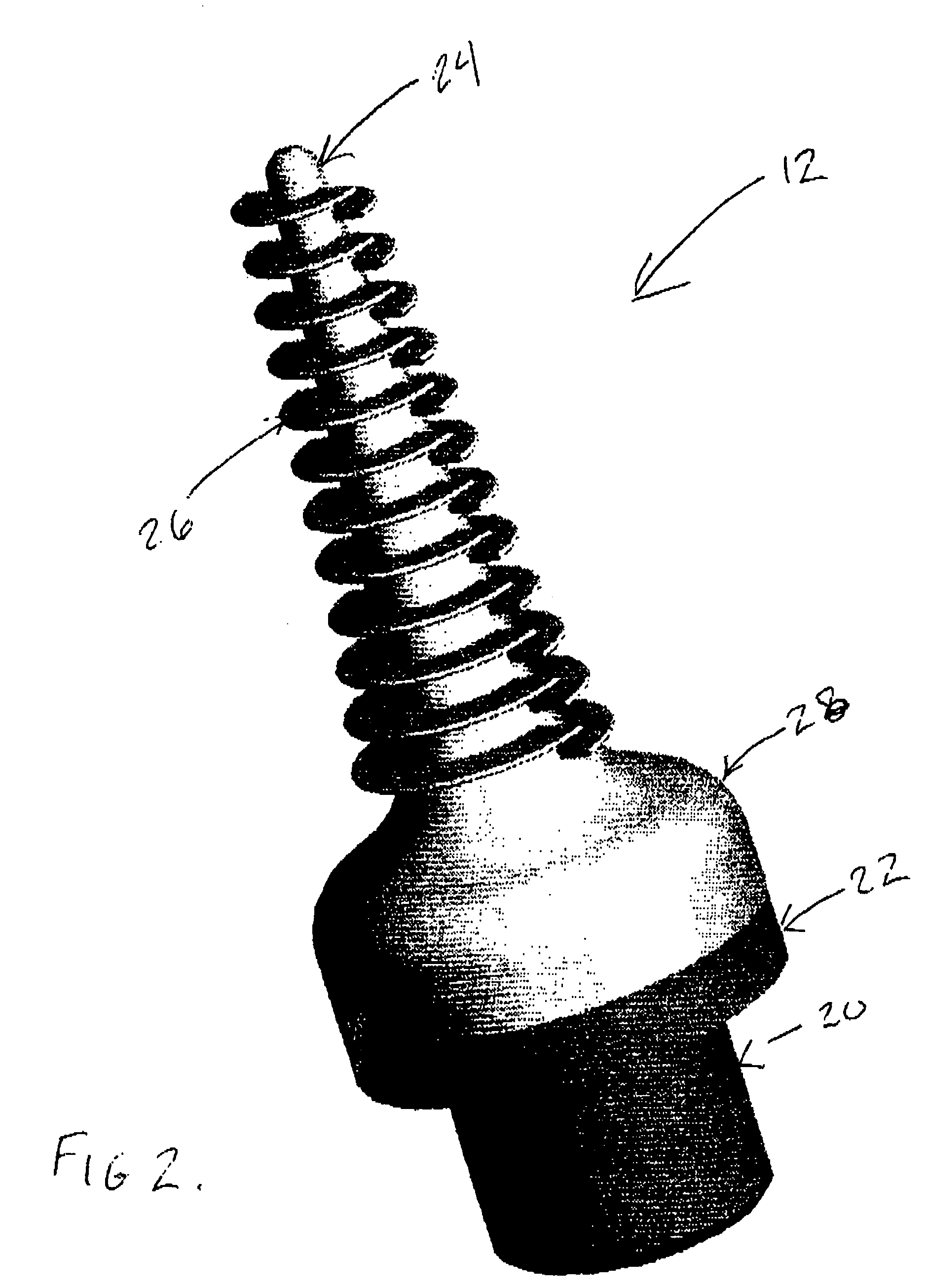Tooth brushing is generally ineffective in cleansing the spaces and tunnels between the teeth.
Concave surfaces may meet resulting in a very difficult to clean concavity between the teeth.
It is in these spaces and tunnels where most of the gum problems and many cavities develop.
While there are devices that have been invented to clean these areas, these devices have not been sufficiently convenient and effective for them to provide a significant contribution to the public
dental health.
Moreover, it is beneficial to gently stimulate the gum tissue surrounding the teeth but the brushing of one's teeth with the standard
toothbrush often provides insufficient tissue stimulation for good
oral health.
However, it is well known that flossing is inconvenient and difficult to perform.
Further, flossing does not clean concave surfaces or concavities that exist between teeth.
In addition, conventional brushing action, particularly over an extended period of time, can result in undesirable wear on teeth surfaces.
However, these devices have significant disadvantages, including a requirement of relatively high
water pressure.
Generally, these devices are not very effective in removing plaque.
In addition,
bacteria spread sometimes results from use of these devices.
The primary difficulty with such devices is the requirement of providing energy through the bristles at ultrasonic frequencies, which are substantially higher than the resonant frequency of the bristles, resulting in very low efficiency of
energy transfer to the tips of the applicator.
Safety issues may be significant with such devices, due to the application of ultrasonic energy to living tissue.
It is questionable, however, that a vaporous
cavitation effect is actually produced by these devices, particularly for those which are
hand held and powered by batteries.
However, the “
cavitation” produced by this device, which in fact is not vaporous
cavitation (vaporous cavitation being often referred to as “true” cavitation) does not extend beyond the tips of the bristles, and therefore the device is not particularly effective in the inter-dental and subgingival areas of the teeth where enhanced cleansing is needed.
However, these devices are not particularly effective at cleaning between teeth, where the direct brushing action cannot reach.
With devices in the low
audio frequency range, cavitation is often dampened or even negated when conventional
bristle scrubbing action is used.
However, when these devices are used for cleaning between narrow separations between teeth, significant
brush pressure on the teeth is required to force the
brush tip into the tight spaces, resulting in excessive load pressure and alarm signals without substantial cleaning to the narrow regions.
The cleaning effectiveness of these traditional products tends to be limited because the cross-sectional area of these products tends to be reduced when tension is applied.
Consequently, traditional
fiber-based products have a limited capability in reaching and cleaning areas under bridges and
implant prostheses that may be concave or which may have irregular surface contours.
Further,
fiber-based products tend to snag and fray or shred on sharp edges in the mouth.
Difficulty in inserting floss between teeth;
Floss fragments lodge between teeth and are difficult to remove.
The known and readily available devices for interproximal cleaning are manually operated and require great dexterity and patience to successfully clean the teeth.
Soft wood interproximal cleaners / stimulators lack durability and tend to soften, splinter, fray and break after being used in the mouth for a relatively short period of time.
These products may also lack the strength necessary to be pushed into restricted interproximal spaces.
Hard plastic interproximal cleaners / stimulators, on the other hand, typically have sharp points and sharp edges that can injure
soft tissue if used carelessly or aggressively.
Further, the lack of flexibility of these products severely limits their ability to clean interproximal tooth surfaces.
Traditional molded rubber tips are primarily beneficial for
soft tissue stimulation and are not effective for thorough
plaque removal.
The cores of such prior art brushes are capable of withstanding very limited bending forces, the
brush bristles lack durability, and the replaceable interproximal brushes used with
toothbrush-style handles must be changed frequently.
Though these devices have shown improvement in cleaning
efficacy, they have limitations in useful lifetime and are effective in
specialty applications.
Neither of these instruments is capable of effectively promoting complete
oral hygiene.
While each of these inventions offers one or more novel features directed at overcoming the limitations or shortcomings of the traditional prior art, each of these products present, individually and collectively, limitations that fail to satisfy all of the criteria for a clinically effective interproximal
cleaning product necessary for gaining wide acceptance by dental professionals and
dental patients.
The known and readily available devices for interproximal cleaning are manually operated and require great dexterity and patience to successfully clean the teeth.
 Login to View More
Login to View More 


